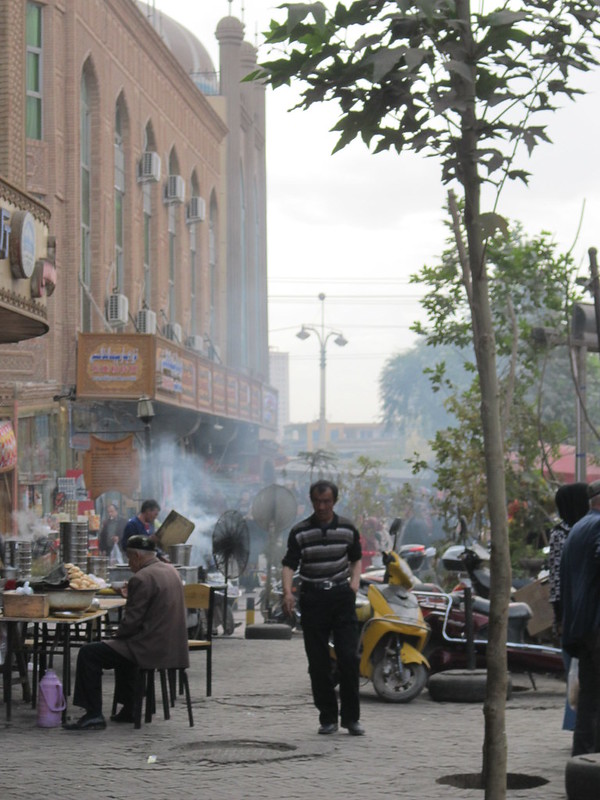We have a chinese stamp in our passport but it feels like cheating because Kashgar is very different to the rest of China and we were only there for 5 days.
Famed by the Silk Road, Kashgar is an eclectic mix of traditional Uighur culture and modern Han Chinese enterprise. The city contains epic underground shopping centres and a great big bazaar; both are noisy, busy and brimming with people. Women wearing headscarves zip across the city on electric scooters. Street cleaners play tinny versions of ‘we wish you a merry Christmas’. Women form part of manual labour workforce, identifiable by the bonnets attached to their hard hats.
Most people in Kashgar are Uighur, related more to the Tajiks than Han Chinese. Muslim by religion with a strong social identity, the Uighur and Chinese government frequently find themselves at odds. The police presence and street ‘home guard’ stations (often manned by women sleeping on their riot shields) suggested a simmering tension.
In the quest to ‘conserve’ Uighur culture, the government has torn down much of the old town and rebuilt it, complete with ‘approved’ trade shops, special ‘tourist toilets’ and the odd sign in jumbled english.
Whilst the Uighur architecture and hand trade remains, it was a bit galling to sip tea in the ‘ancient tea house’ that was entirely rebuilt in 2013.
This all sounds very negative, so its important to say that Kashgar is beautiful, a fun city to hang out where we felt safe as houses. If you want to visit, go soon.
We spent our days drinking tea in the courtyard of our hostel, eating well and planning for the big adventure – the highest road in the world – the Karakoram Highway into Pakistan.
We left Kashgar on 26th October. Due to internet censorship in China we couldn’t access the blog so we are a bit behind with our posts.
